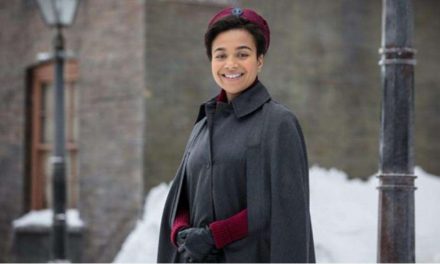Much has been written about the way in which social media has reinvigorated live television, particularly from the perspective of the audience (for example, Liz Evans, Sheryl Wilson, or Inge Sø
renson). But much less is known, or written, about how the liveness of social media has affected the production of a range of forms of live television that have made increasing use of platforms such as Twitter, Facebook, Periscope, Instagram and Snapchat. Such genres include sports, big shiny floor shows (known as “light entertainment” in the UK), the news and special events.
Our research fellow on the ADAPT social media project, @nikistrange, has allowed us an insight into that process thanks to access to the digital team at the UK’s production of The Voice. The production involves the BBC, television production company Wall to Wall, their digital production team and social media experts ThatLot. After interviews with various members of all those teams, on Saturday night I was able to observe the live semi-final of the programme to witness how social television is produced first hand.
In this blog I want to offer some first notes on the way in which social media production operates within the overarching television production process. This blog therefore really aims to contribute to the ‘hands on history’ aspect of the ADAPT project and wider approaches to media histories that it engages with – rather than my usual work on production cultures.
The process I concentrate on here focuses on how images and video were generated for the Twitter stream of the show, but it’s also worth noting that the social media production of the crew included the innovative (or at least adaptive!) use of a range of social tools: from WhatsApp to Dropbox, as a means of sharing production information and managing workflow.
The images below therefore set out a production process of capturing rich media from the show’s live performance, ingesting these, editing them for mobile formats, scripting the content to accompany them and then releasing them to multiple platforms – almost simultaneously. This was a well-planned process, which the team had worked together on for the past few seasons. As a result it was incredibly quick, reflecting the pressures and production modes of live television: taking less than 2 minutes from the time the photo was taken to its publication on Twitter, Facebook and Instagram. This meant that, for each of the 8 contestant’s performances captured via photography, the image of their performance was released on social media simultaneous to their live television performance. Of course, such synchronous scheduling of the release of content seems only natural: it is where the value of the liveness of television and social media coalesce. But the seamlessness with which audiences receive this information and images, and which they value, belies the complexity of production. Each single image involved 5 or 6 members of production:
- The digital image producer: taking images and then later taking responsibility for Instagram
- The runner: labelling SD cards with post-it notes and handing these to the junior digital producer
- The junior digital producer: who ingested images, cropped and colourised them releasing them to multiple platforms – both public and production facing;
- The executive digital producer: who ensured the production ran to schedule and liaised with the TV production team
- The social media writer/executive: who scripted the Tweets, including the approximate release schedule;
- The BBC Commissioner/Exec Producer: who dealt with issues of editorial policy and compliance as the tweets were published.
Audiences increasingly take the ‘live’ Twitter stream, including a range of visually rich media forms, as routine. Social media managers often have a great deal of access to a range of digital assets from pre-recorded programmes that can be carefully managed, curated and released to produce synchronous dual screen experiences. But the production of live television reveals how the production routines these visually rich media streams involve are anything but ordinary.




To wit: the complexity described in this blog only relates to the production of single images for the social media streams. As part of the current ADAPT project we are also investigating how the production of video content for such social platforms involves a range of innovative, adaptive and routine production modes. More on this to follow in future blogs.
Thanks for reading
James
Note: To retain anonymity of our participants, names have been charged and faces blurred.
Dr James Bennett is a Reader in Television & Digital Culture at Royal Holloway, University of London. His work focuses on digital television as well as TV fame.





